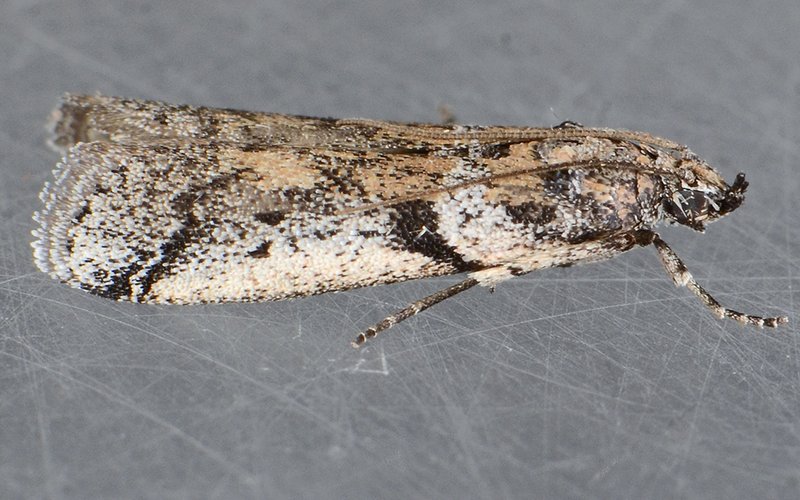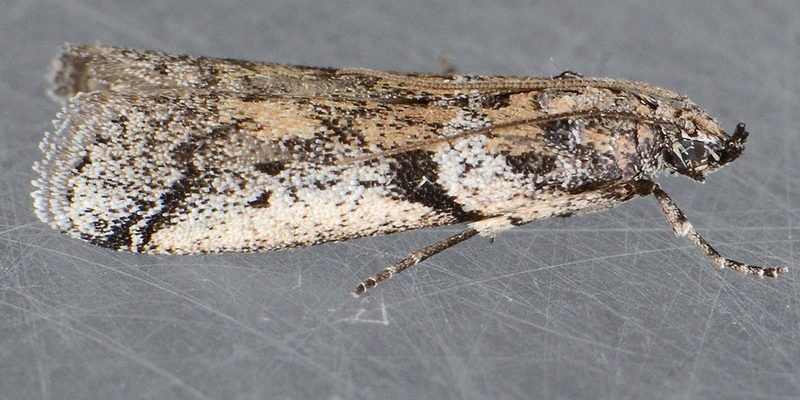
The Navel Orangeworm Moth, or Amyelois transitella, is more than just a name that rolls off the tongue. It’s a little moth with a big impact, especially for farmers and gardeners dealing with crops like almonds and pistachios. These small creatures are not just ordinary pests; they can wreak havoc on agricultural yields, making them a crucial focus for anyone involved in fruit cultivation. Imagine tending to your beautiful orchard, only to find that something is munching away at your precious harvest. That’s the reality when navel orangeworms come to town.
But what exactly are these moths? They belong to the family of Pyralidae, which includes several other moth species. Their lifecycle and habits can be quite fascinating, and understanding them can help in managing their populations effectively. If you’re curious about what these moths look like, how they live, and what you can do to protect your crops, you’re in the right place.
Physical Characteristics of the Navel Orangeworm Moth
When it comes to the physical attributes of the navel orangeworm moth, size and color play a significant role in their identification. These moths have a wingspan of about 18 to 24 millimeters, which is relatively small compared to other moths. The forewings are typically tan to light brown and have a distinctive pattern. If you look closely, you’ll notice that they often have a darker band running diagonally across them, which can help in distinguishing them from similar species.
The hindwings are much lighter, usually appearing beige or nearly white. This color contrast adds to their unique appearance. One interesting fact is that the navel orangeworm moth undergoes several stages in its life cycle, including egg, larva, pupa, and adult. The larval stage is when they are most destructive, as they feed on the insides of fruits, leading to significant damage.
Life Cycle of the Navel Orangeworm Moth
The life cycle of the navel orangeworm moth is quite intricate, consisting of four main stages: egg, larval, pupal, and adult. It all begins when the female moth lays tiny, sticky eggs, usually on the surface of a fruit or nut. These eggs are nearly invisible to the naked eye and can hatch within a few days under optimal conditions. Once they hatch, the larvae emerge and begin their destructive journey inside the fruit. Picture tiny caterpillars that are not only munching on the fruit but also creating holes that allow bacteria and fungi to enter, further damaging the crop.
The larval stage is the most critical since this is when the moth causes considerable harm. Depending on environmental conditions, the larvae will typically feed for about two to three weeks before pupating. The pupal stage lasts for several days, during which the larvae transform into adult moths. Once they emerge as adults, the cycle starts all over again. This quick turnaround allows them to reproduce multiple times within a single growing season, making pest control a challenging task.
Habitat and Distribution
The navel orangeworm moth is mainly found in regions that support the growth of its preferred crops, particularly in the southwestern United States. States like California, Arizona, and Texas see a high prevalence of these pests due to the warm, dry climate that is favorable for their lifecycle. They thrive in orchards, especially those with almonds, pistachios, and other stone fruits.
If you’re wondering about their habitat, think of orchards filled with ripe fruits and nuts. These areas provide not just food for the larvae but also a safe breeding ground. As the seasons change, the moths can migrate. They may move from one orchard to another in search of better conditions or more abundant food sources. This mobility is a vital consideration for farmers aiming to mitigate infestations.
Diet and Feeding Habits
The diet of the navel orangeworm moth is strictly herbivorous, with a strong preference for tree fruits and nuts. They are particularly fond of almonds, pistachios, and walnuts. During the larval stage, these pests can devastate entire crops, as they burrow into the fruit, feeding on the flesh inside. This behavior doesn’t just affect the fruit quality; it can lead to increased risks of fungal infections, a common issue in agriculture.
As adults, their role in feeding changes significantly. They do not consume solid food; instead, they feed on nectar from flowers. This nectar consumption helps them gain the energy needed for reproduction, completing their lifecycle. However, it’s the larvae that pose the significant threat to farmers, making effective pest management essential to protect fruit quality and yield.
Impact on Agriculture
The impact of the navel orangeworm moth on agriculture, particularly in nut and fruit production, cannot be overstated. Farmers face enormous challenges when these pests invade their crops. One of the most significant consequences is the loss of yield. Damage from the larvae feeding inside the fruit not only results in unsellable produce but can also lead to increased labor costs associated with sorting and processing damaged goods.
Moreover, the presence of navel orangeworms can necessitate more aggressive pest control measures, including pesticides and other interventions that can be costly and may pose environmental risks. This creates a vicious cycle where farmers are forced to spend more resources to combat the problem, potentially impacting their profit margins. Additionally, increased pesticide use can lead to resistance, making it even harder to control these pests in the future.
Pest Management Strategies
Effective pest management strategies for controlling navel orangeworm populations are crucial for protecting crops. Integrated pest management (IPM) is a widely recommended approach. This method incorporates multiple tactics, including biological control, cultural practices, and, when necessary, chemical controls.
Biological control methods might involve introducing natural predators or parasitoids that specifically target navel orangeworms. These could include certain types of wasps that lay their eggs in the larvae, ultimately reducing their numbers. Cultural practices, like monitoring and proper timing of irrigation, can make the orchard less hospitable to these pests.
In some cases, farmers may need to resort to chemical treatments. However, choosing the right pesticide and applying it at the right time is critical. The goal is to minimize harm to beneficial insect populations while effectively controlling the navel orangeworms. Collaboration with agricultural extension programs can provide valuable insights and resources to mitigate infestations.
Interesting Facts about the Navel Orangeworm Moth
| Size: | 18-24 mm wingspan |
| Color: | Tan to light brown with darker markings |
| Habitat: | Orchards, especially in warm climates |
| Diet: | Feeds on nuts and stone fruits |
| Life Cycle: | Egg, larval, pupal, adult stages |
| Impact: | Causes significant crop damage |
Common Misconceptions
There are a few misconceptions associated with the navel orangeworm moth that can lead to misunderstanding their behavior and impact. For instance, many people think that these moths are harmless once they reach adulthood, but this isn’t entirely accurate. While the adult moths don’t cause direct harm, their role in laying eggs on crops can lead to severe infestations that result in crop loss.
Another misconception is that chemical controls are the only way to manage these pests. Many farmers may feel overwhelmed and think that their only option is to spray pesticides. However, as we’ve discussed, integrating various management strategies can often yield better long-term results. Understanding that these pests have complex life cycles allows for more targeted and effective interventions.
The Navel Orangeworm Moth is a small creature that can cause significant disruptions in agricultural practices, particularly in the cultivation of almonds and other stone fruits. By understanding their lifecycle, habitat, and feeding habits, farmers and enthusiasts can take proactive measures to manage these pests effectively. Remember, while they may be pests, knowledge is power. By equipping yourself with the right information and strategies, you can protect your crops and contribute to healthier ecosystems.
FAQ
What do navel orangeworm moths look like?
Navel orangeworm moths are small, with a wingspan of 18-24 mm. Their forewings are tan to light brown, often with a darker, diagonal band. The hindwings are lighter, typically beige or white. This distinctive coloration helps in identifying them among other moth species.
How can I identify navel orangeworm damage on my crops?
Identifying navel orangeworm damage involves looking for small holes on the surface of fruits or nuts. You may also notice frass (excrement) near these holes or on the ground beneath the trees. If fruits appear to be rotting or have internal damage, this could indicate an infestation.
Are navel orangeworms harmful to humans?
No, navel orangeworms pose no direct harm to humans. However, their presence can lead to crop loss and agricultural issues that may indirectly impact food availability and prices. They do not bite or sting and are generally not a health concern.
What are some natural predators of navel orangeworms?
Some natural predators include parasitic wasps that lay their eggs inside navel orangeworm larvae. These wasps help control pest populations naturally. Introducing such predators can be an effective part of integrated pest management strategies.
How do navel orangeworm populations grow so quickly?
Their life cycle allows for rapid reproduction, as they can lay hundreds of eggs at once. Under optimal conditions, they can go from egg to adult in just a few weeks, enabling multiple generations to develop in a single growing season.
Is using pesticides the only way to control navel orangeworms?
While pesticides can be effective, they are not the only option. Integrated pest management strategies that include biological controls, cultural practices, and careful monitoring can also significantly help reduce navel orangeworm populations while minimizing chemical use.
Why are they called “navel orangeworms”?
The name “navel orangeworm” comes from their tendency to infest navel oranges and other citrus fruits, leading to the damage that resembles decay at the navel of the fruit. This specific naming highlights their feeding preferences and the issues they cause in orchards.
Can navel orangeworm infestations be prevented?
While complete prevention is difficult, you can minimize the risk by practicing good orchard management. This includes proper sanitation, timely harvests, and monitoring for early signs of infestation. Staying informed and proactive can help protect crops from these pests.
What seasons are navel orangeworms most active?
Navel orangeworms are most active during warm months, typically from late spring through late summer. This is when their lifecycle speeds up, and they are more likely to infest crops. Monitoring is crucial during these seasons for effective control.

